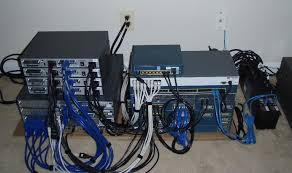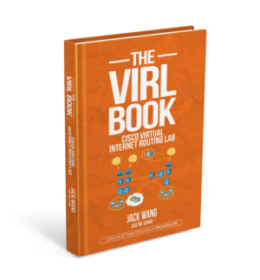
I’m going to do something a bit different in this post and give you a review of The VIRL Book by Jack Wang.
I think this will add value for a lot of you because my most popular resource right now is my How to Build a NetApp Lab for Free ebook. With the converged infrastructures in today’s cloud and data center environments, system engineers are expected to have knowledge of compute, networking and storage. You can’t really get by with knowing only one of the three anymore. So if you’ve downloaded my NetApp book already, there’s a good chance you’d also appreciate a guide that tells you how to build and use a Cisco networking lab.
Before I get to the review though, let’s discuss the different options you have for your Cisco lab. If you already know you’re going to use VIRL then you can just skip straight ahead to the ‘VIRL Book Review’ section below.
Physical Lab
You could go old school and use physical hardware, but that’s only a good option if your office has the equipment lying spare in a cupboard. Buying it yourself from Ebay is comparatively expensive, it’s time consuming to find the hardware and get it delivered, and it takes up space and needs electricity. A physical lab is going to be by far the least popular option with your other half.
If you’re brand new to networking I understand you’re going to have an overwhelming desire to actually see and feel the physical equipment, but try to resist this. When you land your first job in networking you’ll see that you spend 99% of your time at your desk using Putty to remotely configure the devices, you rarely need to actually touch one. If you absolutely must have a physical device, I recommend you buy the cheapest router you can find on Ebay and use a virtual lab for the rest.
GNS3
So now the physical lab has been eliminated, that leaves us the virtual lab options of VIRL, IOU and GNS3. Let’s talk about GNS3 first. I’ve used it extensively myself for my own study and also for running labs when I’m delivering Cisco training. It doesn’t really have a bad reputation for this, but I’ve found GNS3 to be unstable and often in need of a restart meaning recent work is lost. You could probably live with that for a home lab, but another issue is that the platform and feature support is limited. If you’re a newbie you’ll also find it hard to source the required IOS images. Okay those are the bad things. The good things are it’s free (very good!), there’s heaps of information in the forums, and the learning curve isn’t too bad.
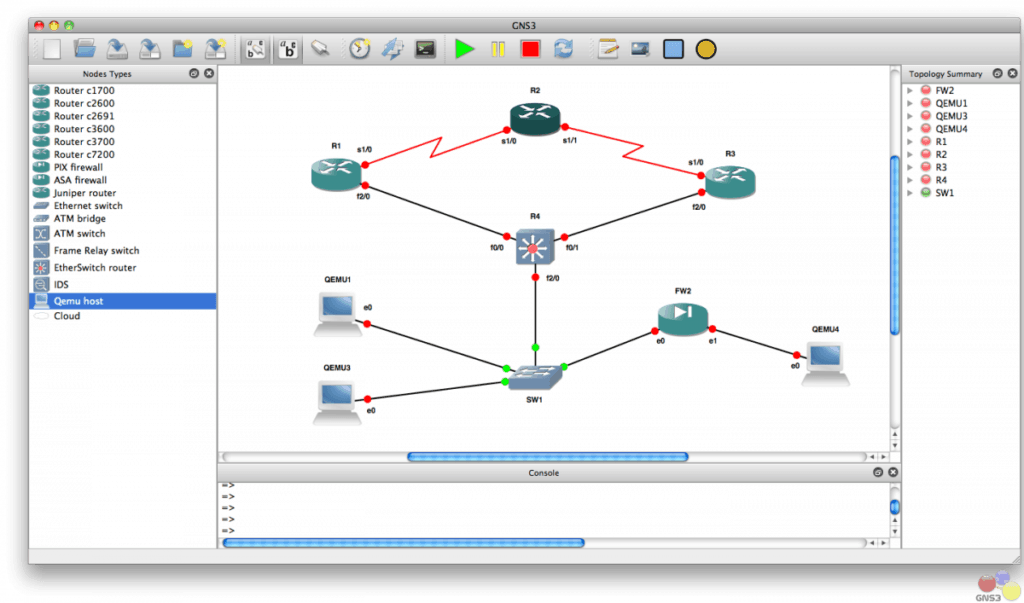
IOU
IOU is officially for Cisco internal use and partners so it’s hard to get hold of, and also there’s comparatively limited information available online about it. I’ve never used IOU because of these issues and because I was already familiar with GNS3.
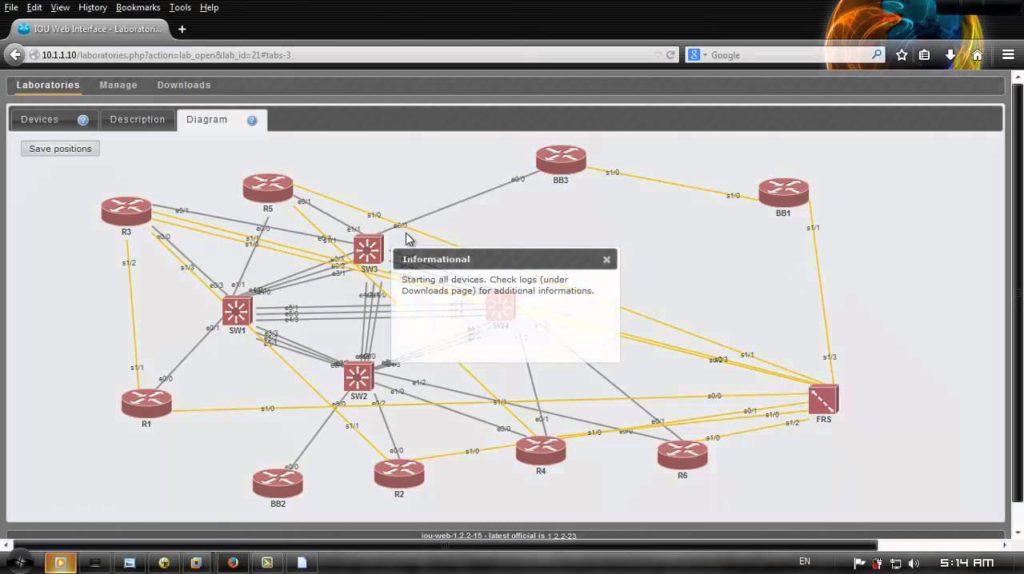
VIRL
So that leaves us with VIRL. The good things are it has the best platform and feature support other than a physical lab, and it’s officially supported by Cisco so you don’t need to worry about finding software images, licensing or keeping it current. The one drawback with VIRL compared to the other options is that it requires a paid license. But if you can spring for that or get your company to do so then VIRL is the best option and what I would use if I needed to learn Cisco networking now. The current pricing options are available on the Cisco website.
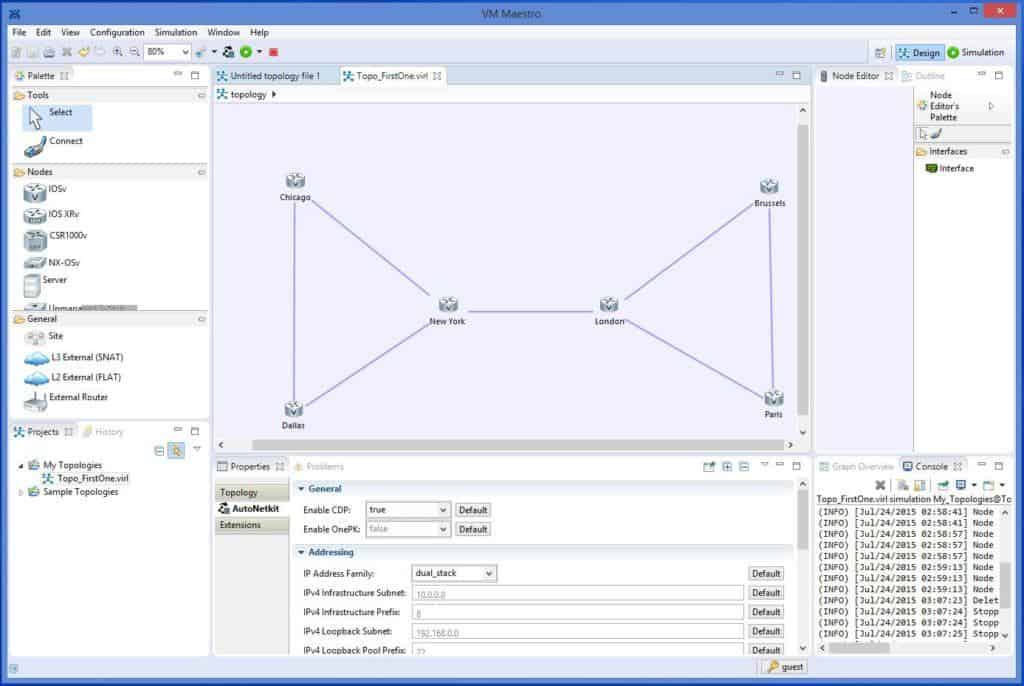
If you do go with the VIRL lab, you’re going to need to know how to set it up and use it. That leads us on to…
The VIRL Book Review
Full disclosure first – there’s no affiliate links in this article and I don’t gain anything if you purchase the book. I’m connected with the author on social media so the launch of the book was on my radar, but I’m giving a purely objective and honest opinion.
The first thing that strikes you about the book is its thoroughness. It covers everything, and I mean everything, that you could need to know about how to set up and use the VIRL lab. This is what really justifies paying the purchase price. You could possibly find some of the material in other places online (I’m pretty sure you couldn’t currently find everything in the book though), but you couldn’t find it all in one place and laid out in a logical and easy to follow format.
Want to know what the different deployment options are and the advantages and disadvantages of each? It’s covered just after the overview.
You went with VMware? Is that on Workstation, Player, or Fusion on a Mac? Or you went with bare metal or Packet Cloud? Don’t worry, each option is individually covered with detailed instructions including screenshots.
What if you run into problems with the install? Troubleshooting is next.
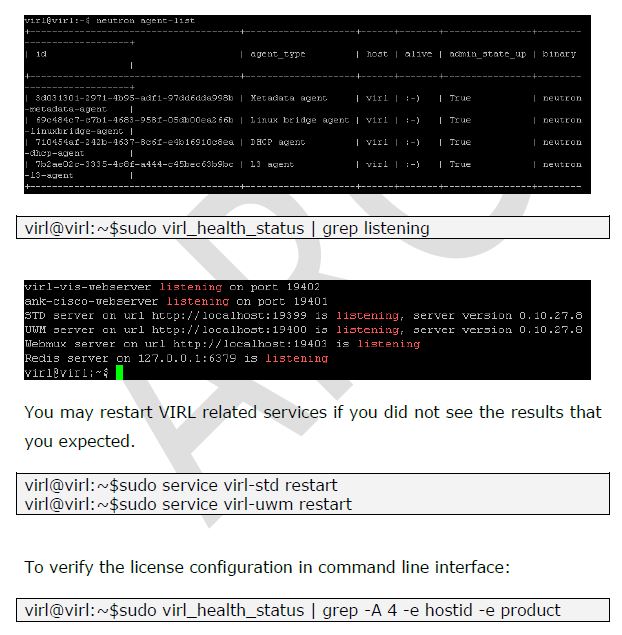
How to access the lab using Putty or Secure CRT? Covered. From a Mac? Covered. Through a firewall? Covered.
We haven’t even got halfway through the contents yet. There’s also a section about how to integrate third party devices into your lab such as Palo Alto firewalls. Again, it’s not just a short paragraph saying it’s possible. Detailed instructions on how to do it are provided.
I was expecting the installation guide to be a shorter first section of the book, and then the main meat of the book to be sample topologies and lab exercises, but it’s actually the other way around. The bulk of the book explains installation and how VIRL works in crazy detail so that it’s the only resource you’ll need for that. It then has a short section of sample topologies and exercises, and directs you to where you can find more of these online, including external resources and the author’s blog at speaknetworks.com. This gives you the best of both worlds because you get everything you could possibly need to know to get up and running in one resource, and then you learn where to find the topologies and exercises so you can pick and choose the feature you want to work on at any particular time.
If you’re going to use VIRL then I highly recommend the book. You could maybe figure out how to get your lab working without it, but it would involve loads of googling and frustration. Buying the book will give you everything you need in one resource.
